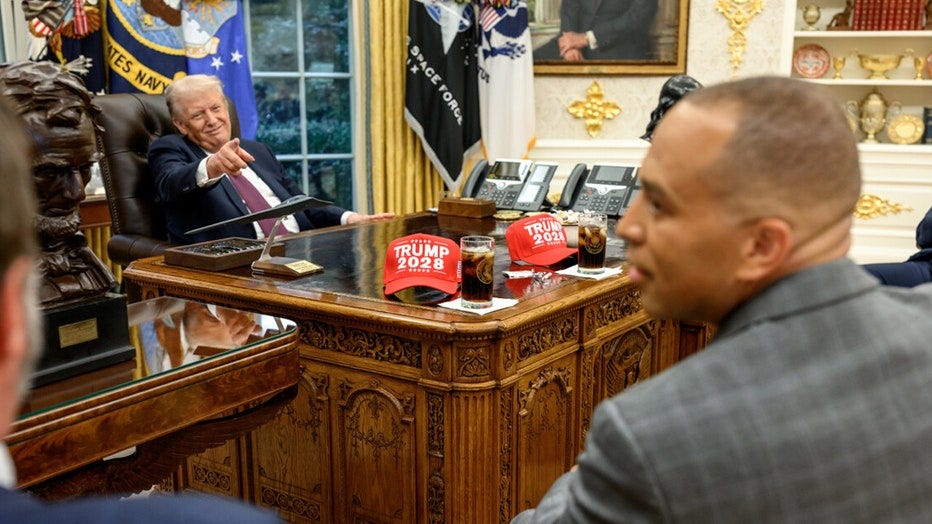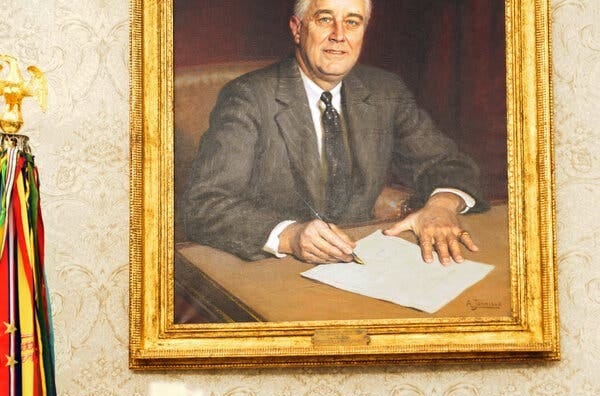Trump and Mamdani Broke the Script
A strange Oval Office moment that hinted at a new political axis.
Earlier in the week when Trump posted that Zohran Mamdani was visiting the White House, I had no idea what to expect.
Trump had called him, among other things a “communist lunatic,” “my little communist mayor,” “radical left lunatic,” “not very smart” and a “complete and total disaster.”
The meeting felt big. American politics is often at its worst when it’s predictable. This wasn’t predictable.
What actually unfolded was wild. Two guys who, on paper, should hate each other (and have said vicious things about each other) got along like old chaps.
It felt weird in a way that signals something big shifting under the surface.
What ended up happening at the meeting was the early signs of a bottom-vs-top politics.
Heading to the meeting, Mamdani posted a selfie from his shuttle to DC. A middle coach seat, grinning ear to ear, as if he was heading to a big work meeting.
This wasn’t a charming detail. It’s modern political communication.
It said: I’m not sheltered. I live your life. That instinct matters. And it’s authentic to Mamdani.
It’s actually the same instinct that powered Trump in 2016, in his own way. He collapsed the distance between the voter and the candidate, by using language, foils and surprises.
In the attention economy we live in authenticity can’t be faked.
There was a clip everyone saw: Mamdani calmly saying he viewed Trump as a fascist. And Trump laughed it off, nudging him to keep it going.
It didn’t escalate. Not because the word lost its meaning, but because both men are playing in a new political framework.
As Ryan Grim tweeted, the Trump/Mamdani moment “gave the country a vision of what bottom-vs-top rather than left-v-right politics could look like.” It wasn’t a realignment, but a glimpse of what could be coming.
This moment captured a deeper truth. The ideological insult didn’t matter because the old rules don’t apply anymore. The real tension wasn’t personal or ideological. It’s structural.
Mamdani showed a level of sophistication that felt significant. He’s ready for the big leagues. He kept returning to his core: rent, utilities, groceries, child care.
62% of Americans don’t have a college degree. Many Democratic leaders sound like they’re talking only to the other 38%. Trump and Mamdani don’t and that’s why the meeting felt oddly natural.
Trump was comfortable riffing about jobs, the economy and affordability (especially after the recent election results).
But this is why he was more relaxed with Mamdani than he ever is with Schumer or Jeffries. He treats establishment Democrats like annoying bureaucrats. He treated Mamdani like his protege.
Deep down, Trump knows Mamdani speaks to the 62% without college degrees. That’s why the room felt different.
The old DC playbook of memos, talking points, obsessing over phrasing, can’t compete anymore. It doesn’t reach normal people.
They were operating on the same wavelength even though they’re coming from opposite worlds.
The backdrop of all this is clear. Wealth concentration is at levels we haven’t seen since the Gilded Age. A handful of companies dominate the economy.
Combine this with an affordability crisis and an AI wave underway that is about to wipe out entire sectors of jobs.
Trump and Mamdani aren’t allies, but they weren’t openly fighting either. It was a brief moment where you could see the fault line moving.
One part of the presser stuck with me. They talked about their shared admiration of FDR. The last president who directly confronted concentrated power and transformed the lives of normal people.
The FDR moment wasn’t a shared moment of unity. But it was another sign. It showed the pressure from the bottom is strong enough that both sides feel it.
You don’t have to agree with either of them to feel it… the ground is starting to move.






